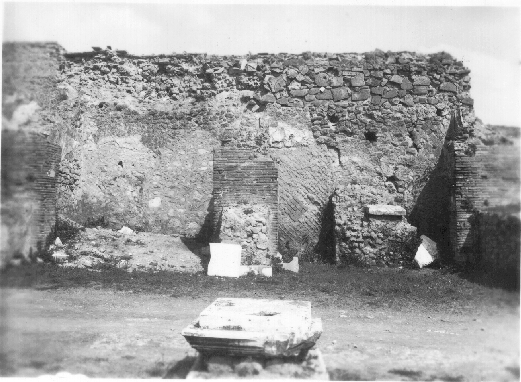
Courtesy Soprintendenza archeologica di Pompei: E24(ex.E/10); undated. Macellum. Facade. Shops 25 and 26, from the west.
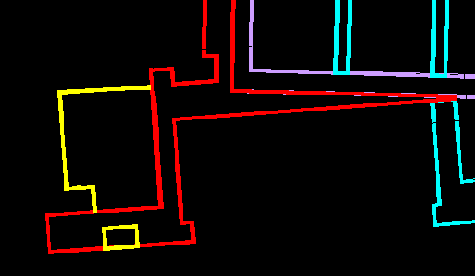
For a discussion of this critical wall juncture, click here.
The reading of this critical wall juncture is complicated by extensive modern reconstruction that is documented in the first five photographs.

Courtesy Soprintendenza archeologica di Pompei: E24(ex.E/10); undated.
Macellum. Facade. Shops 25 and 26, from the west.
The upper part of the rear wall of shop 26 (right shop) is constructed of architectural rubble which usually signals postearthquake reconstruction. This masonry is now completely obscured by later restorations as the next two photographs demonstrate. The critical question, "Is the architectural rubble ancient?" cannot be answered definitively. The present writer is inclined to see it as ancient.
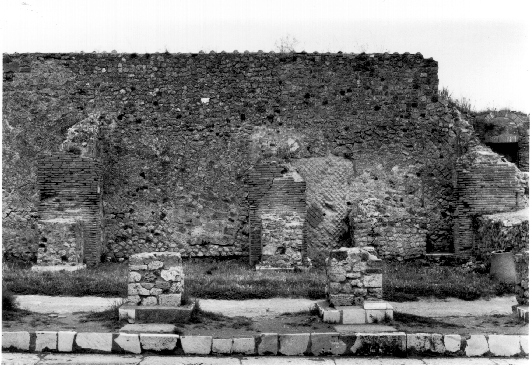
Macellum. Facade. Shops 25 and 26, from the west. 1991 photograph.
The extensive resurfacing of the upper part of the wall obscures the architectural rubble visible in the previous photograph.
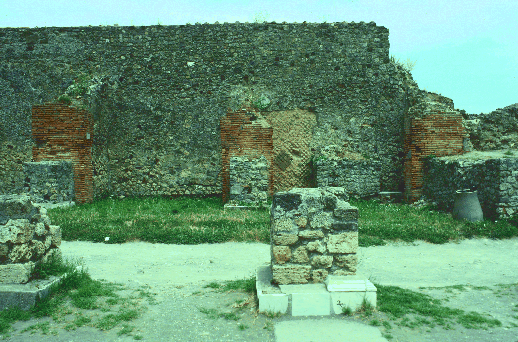
Same as previous. 1991 color slide.
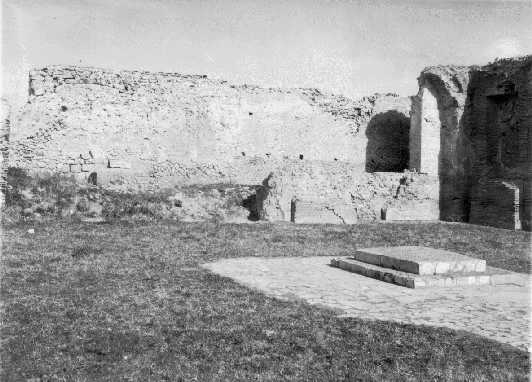
Courtesy Soprintendenza archeologica di Pompei: A(773)7912 8-6-67.
Imperial Cult Building (north side) and Macellum beyond showing masonry now masked by modern restoration (next photograph), from the south.
Architectural rubble appears in the upper left region of the Macellum wall and at the rear of the cult building's north exedra. This latter architectural rubble is now masked by the modern opus reticulatum that is visible in the next photograph.
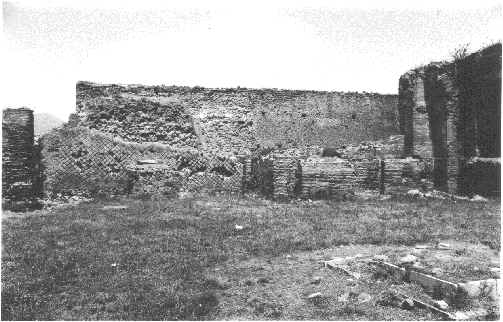
Imperial Cult Building (north side) and Macellum beyond; 1991 photograph, from the south.
A comparison between this photograph and the previous one reveals that the opus reticulatum masonry and possibly the doorway at the right of the exedra ( D92.96) are modern.
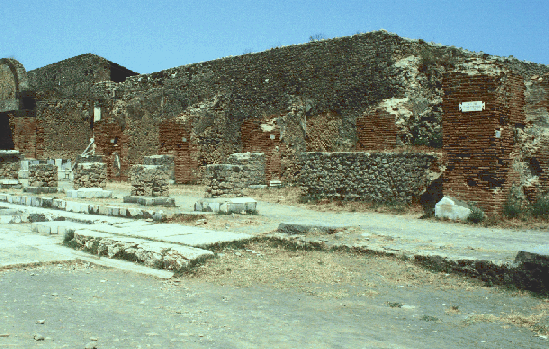
Macellum facade (south half), from the southwest.
This and the following photograph show the relationship between the Macellum facade and the north exedra of the Imperial Cult Building. The facade of the Macellum extends to the south beyond the corner of the Macellum and then turns eastward to overlap part of the Macellum's south wall. The same construction also creates the southern termination of the Macellum's facade (W27.93). The structural association of the extension of the Macellum facade and the north exedra of the Imperial Cult Building has important chronological implications: the two features have the same date. As discussed in my forthcoming AJA article, the Macellum facade is a secondary construction that belongs to the postearthquake period. The Imperial Cult Building, which is part of the same construction, therefore shares the same date.
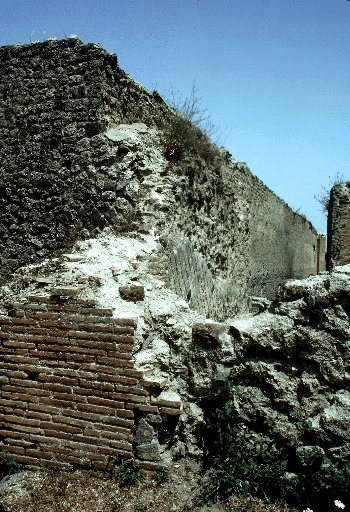
Macellum. Southwest corner, from the southwest.
See discussion accompanying the previous photograph.

Imperial Cult Building (north side) with Macellum beyond. General view from the southwest.
 IATH WWW Server
IATH WWW Server